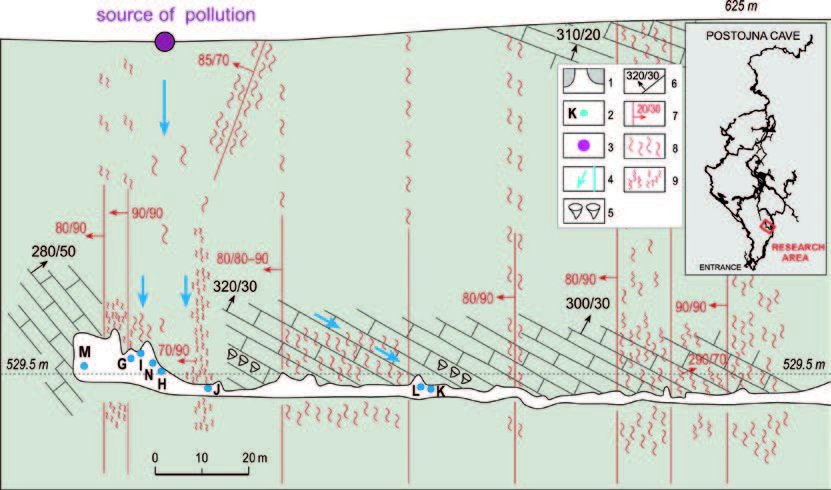Impact of chlorides, nitrates, sulfates and phosphates on increased limestone dissolution in the karst vadose zone (Postojna Cave, Slovenia)
DOI:
https://doi.org/10.3986/ac.v40i2.16Abstract
Distinctive karst hydrology arises from a combination of high carbonate rock solubility and well developed secondary porosity (fissures). Soil CO2 is the most important influence on solubility of carbonate rock (Ford & Williams 2007). Human activity on the karst surface results in pollution that has an important influence on water quality. Degradation of organic pollution (e.g. waste water, leachates from landfill sites) results in inorganic acids too. These acids could have an important additional influence on dissolution of carbonate rocks in the vadose zone. In the framework of more than 20 years of research on precipitation percolation and transfer of contaminants (direct outflow of waste water from a small military facility where about twenty troops were stationed) through the 100-m thick vadose zone of Postojna Cave, contaminated water was observed in drips and trickles in the cave (up to 60 mg Cl-/l, up to 180 mg NO3-/l, up to 2.8 mg PO43-/l, and up to 50 mg SO42-/l). At the same time the sum of calcium and magnesium (Ca+Mg) of trickles was up to two times larger than the Ca+Mg of either the uncontaminated reference trickle or the input waste water. The amount of dissolved limestone carried by waste water to trickles and drips in the cave was directly proportional to the concentration of contaminant anions present. This demonstrates that there is an accelerated widening of fissures below source points of wastewater. Water with contaminants can penetrate faster and deeper into the vadose zone along the increasingly permeable fissures without losing its dissolving power, and thus significant dissolution occurs ever deeper in the vadose zone. This results in ever faster penetration of contaminants through the vadose zone. In the final phase of such development, which takes many decades or longer, relatively rapid transfer of contaminants through the aquifer all the way to karst springs with minimal self-cleansing effects can be expected.
Downloads

Downloads
Published
How to Cite
Issue
Section
License
Authors guarantee that the work is their own original creation and does not infringe any statutory or common-law copyright or any proprietary right of any third party. In case of claims by third parties, authors commit their self to defend the interests of the publisher, and shall cover any potential costs.
More in: Submission chapter




